While traveling across India, you can see very well witness her diversity and distinctiveness. There is a unique mélange of art and culture in the country and you can view them on your journeys across India. The art, handicrafts, and handlooms of India have found their way in Indian souvenirs that you carry back home as your memory of traveling in India. For fridge magnets are a passé now. To take a part of the country or place back with you, you must pick a souvenir unique to that place. To be honest, India is known as a shoppers’ paradise. There are so many different things to buy in India and it can get quite confusing if you have to choose only a few. But shopping in India can be fun as well. It is always great to look at various colorful stuff on display and then decide on buying them at the spot.
We have traveled across the length and breadth of India and have found that there are many rural artisans who produce excellent art and crafts. Most of these art and crafts are handmade and requires immense skill and effort of the artisans. Although you can get almost everything in big cities like Delhi, Mumbai and Kolkata, we believe it is always fun to buy them from the places they have originated. In that way, we also get to know many stories and facts about these Indian souvenirs.
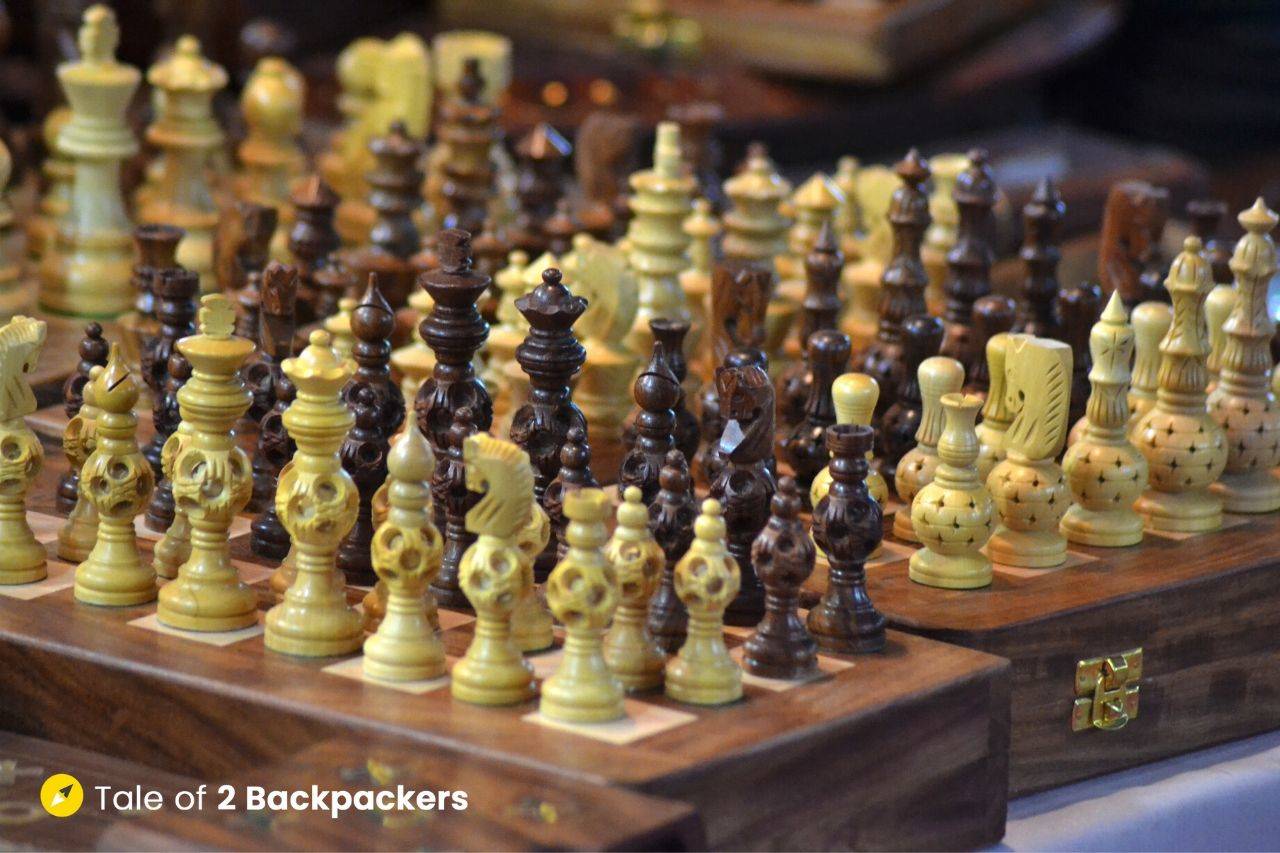
India has 29 states and you can actually pick up souvenirs unique to each of the states. As an Indian, I am sometimes confused about what to buy in India. I am sure it must be as difficult for a foreign traveler to decide and buy an Indian souvenir. In this article, I have made a list of a few Indian souvenirs that you can buy in India and have also mentioned the places where they are produced.
List of Indian Souvenirs | Indian Textile
-
Sarees and other clothes

Sarees are not just a dress for the majority of Indian women; it has also become a part of the culture and heritage in many parts of India. Indian sarees need no introduction and they have made their presence felt in the fashion arena as well. Sarees can be a great Indian souvenir to carry back home. Indian sarees come in various designs, texture and fabric. Cotton and silk sarees are the most famous ones in India. While most of the states in India have a unique style and design of sarees, there are a few of them that are quite famous all over India as well as in other parts of the world. Banarasi Sarees, Chanderi Silk, Murshidabad silk, Assam Silk, Kanjeevaram sarees, Mysore silks, Patola are only a few of the famous Indian sarees that are made and sold in different parts of India.

Apart from sarees, women can also buy kurtis and other dresses. While you should buy sarees from well-established shops or directly from the artisans, for kurtis and other dresses you can simply visit the local markets and shop as per your choice. Most of the local markets have shops selling a variety of colorful dresses that you can buy.
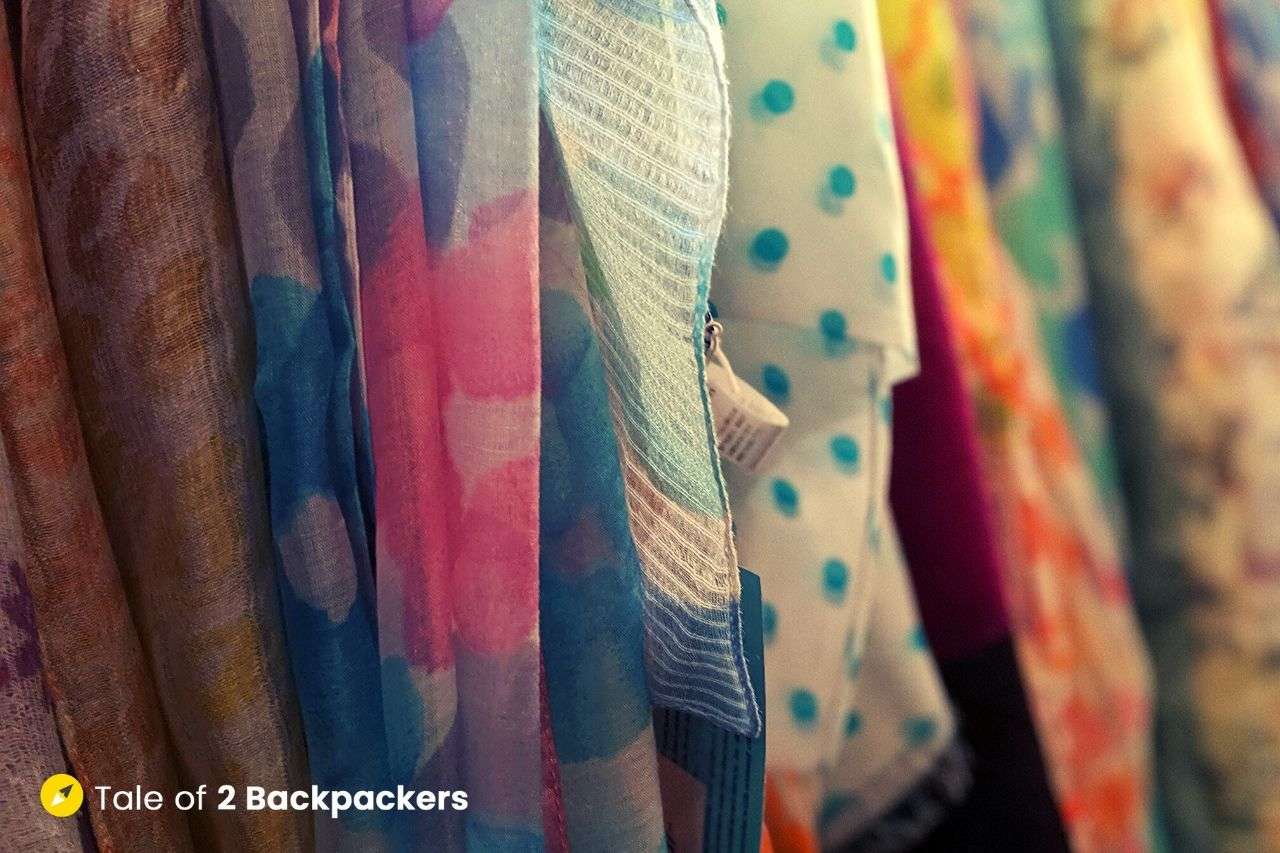
While women do have an upper hand in the shopping department, men too can have their day shopping for kurtas, Indian ethnic top wear. You can also buy tee-shirts and trousers from the local markets.
You can also buy dupattas and stoles as Indian souvenirs. They are easy to use and comparatively cheaper than dresses and sarees. Stoles can be used with any type of dress.
-
Pashmina Shawl

One of the most beautiful and delicate souvenirs in India that you can take home is the Pashmina. The word ‘pashmina’ is derived from the ancient Persian word “pashm”, a term used for any fiber that can be woven. Today Pashmina is synonymous with the soft shawls also known as cashmere.
Pashmina wool comes from a special breed of goats reared mainly in Kashmir and Ladakh area. Cashmere wool can also come from the fine undercoat of goats raised in other areas. These days, pashmina shawls are made from a mixture of fine cashmere wool and some other fiber. It is quite difficult to get 100% pure pashmina shawls as the shopkeepers usually claim.
If you wish to buy Pashmina shawl, we recommend you buy it from authorized stores who can give you a bill of Pashmina purity. Refrain buying pashmina from the roadside stalls. In all probability, those shawls are made from some artificial fabric like rayon. If you want to buy a shawl that just looks like pashmina, then bargain had before buying.
Places to buy: Kashmir and Ladakh area. You can buy from any Kashmir emporium shops.
-
Bandhni (Indian Tie-dye)

Bandhni or Indian tie-dye is one of the famous textiles in India. also known as Bandhej, it is a tie and dye textile that is decorated by plucking the cloth into many bindings so that they form a design. This form of handicraft is practiced mainly in Rajasthan, Gujarat, Sindh, Punjab and Tamil Nadu where it is known as Sungudi. The art of Bandhni involves dyeing the fabric which is tightly tied with a thread at several places to produce different patterns.
Bandhni products are quite colorful and they have their own specific meanings in different communities in India. Each color also has its significance.
Today, Bandhni is used to make dresses, dress materials and dupattas. You can buy these bandhni items and take them back home as a colorful Indian souvenir.
Where to buy: You can buy them at any local market.
-
Lucknow Chikan


Lucknow Chikan is one of the finest forms of textiles in India. Personally, I am extremely fond of Chikan dresses and sarees. Chikan is actually a traditional embroidery style from Lucknow in India. This traditional embroidery form is one of the most ancient and famous art forms to be introduced by the Mughals in Lucknow. The technique is also known as Chikankari and it is unique in its elegance, grace and simplicity. The fabric choice is simple while the design motifs make the garment look quite rich.
YOU MAY ALSO LIKE : BHULBHULAYIA, MAZE & MYSTERY IN LUCKNOW
Originally, chikan was started as a white-on-white embroidery form over muslin that was suited for the warm and humid weather. Today, chikan work is done over cotton and other synthetic fabrics as well. The embroidery is made with white thread, however, nowadays colored fabric is used.
Where to buy: Lucknow is the best place to buy. Visit Hazratganj or Aminabad market area in Lucknow. Nazrana Chikan in Hazratganj, The Modern Chikan Emporium in Janpath are some of the best places in Lucknow to buy chikans.
-
Phulkari

Phulkari is the traditional craft form of Punjab. Literally, the word Phulkari translates into ‘flower work’ and is a part of the culture and traditions of Punjab. The Phulkari was brought to India by the migrant people of Central Asia. In Phulkari, embroidery is done in simple and sparse design over shawls, dupattas and other garments.
Usually bright colors like golden yellow, red, crimson, orange, green and pink are preferred. In earlier times, Phulkari offered complete freedom in terms of creativity and design. Motifs usually represented the values and ethos of Punjab. These days, Phulkari motifs have geometric patterns, flowers, leaves, birds and many other designs. Phulkari is now embroidered on dupattas, dress materials and even sarees.
If you are visiting Punjab on your trip, then do not forget to buy a Phulkari dupatta. You can get Phulkari materials at Dilli Haat.
List of Indian Souvenirs | Indian Food Items
-
Indian Tea
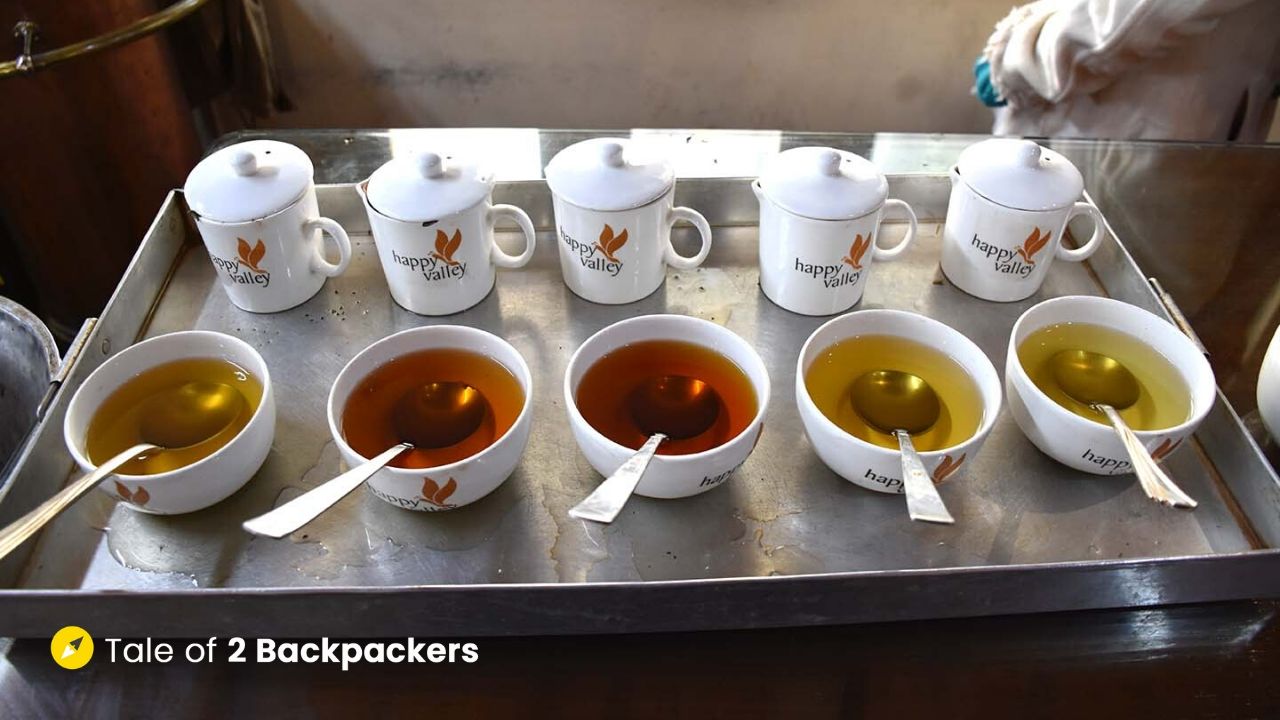
Indian Tea is undoubtedly one of the best in the world. Darjeeling Tea is famous worldwide and is exported to different parts of the world. Other regions that produce world-class variety of tea are Assam, Sikikm, Munnar, Ooty and Coonoor. Meghalaya is also gaining a foothold in the international tea market.
For tea lovers, buying a pack of tea from the tea-growing region has its own charm. While you can sip a cup of tea leisurely, you can also get a tea packet as a souvenir to carry back home. There are different types of tea available in the tea market. The best varieties are black tea, white tea, green tea, oolong tea and many more. We have tasted tea from all the regions in India, but our personal favorite remains Darjeeling tea. There is no comparison to a cup of first flush Darjeeling tea and I am sure those who love tea would agree to this. So if you are in Darjeeling, do not forget to pick a tea packet to carry back home.
You will also get a number of flavored teas in the shops like chocolate, rose, vanilla and others. While we are fond of cardamom and masala teas, but we do not recommend the rest.
Shopping Tips:
- Buy tea long leaf tea leaves instead of CTC.
- Buy a tea packet instead of tea bags.
- Do not buy flavored tea. In most of the shops, you can taste the tea and then buy it. If you are not so sure, then taste it and then buy.
Where to buy tea: Darjeeling, Assam, Sikkim, Ooty
-
Indian Coffee

While India mainly has tea drinkers, coffee lovers are also found in large numbers, especially in the southern part of the country. Coffee is mainly grown in the coffee estates of Kerala, Karnataka and Tamil Nadu. The traditional south Indian coffee is known as Filter Coffee or Kapi. Traditional filter coffee is brewed in a special metal container and served in a tumbler as a frothy and creamy drink. If you are fond of coffee, then a pack of Filter Coffee can be a great Indian souvenir to carry back home.
Where to buy: Chennai, Chikmagalaur (Karnataka), Coorg.
-
Spices

There is no doubt that India is actually the home of spices. There are so many varieties of spices found in India and their qualities are close to perfect. Indian spices actually capture the essence of India and is one of the best Indian souvenirs to carry back home. The aroma and flavor of Indian spices are unparalleled. If you are an Indian, you must know about all the spices that you might want to buy. For foreign travelers, the must-buy spices are cardamom, cinnamon, black pepper, cumin, cloves, star anise, turmeric, star anise and so many more. You can also buy the various curry masala powders available in the market.
The majority of the spices are grown in South India, especially Kerala. So if you are visiting Kerala and Coorg, make sure to buy a few spices of your choice from there. Most of the cities and towns in India will have a spice market of their own. You can go on an olfactory trip to these spice markets. Khari Baoli in Delhi is one of the largest wholesale spice markets in the world. Varanasi also has a very colorful spice market and so does Hogg Market in Kolkata.
-
Pickles
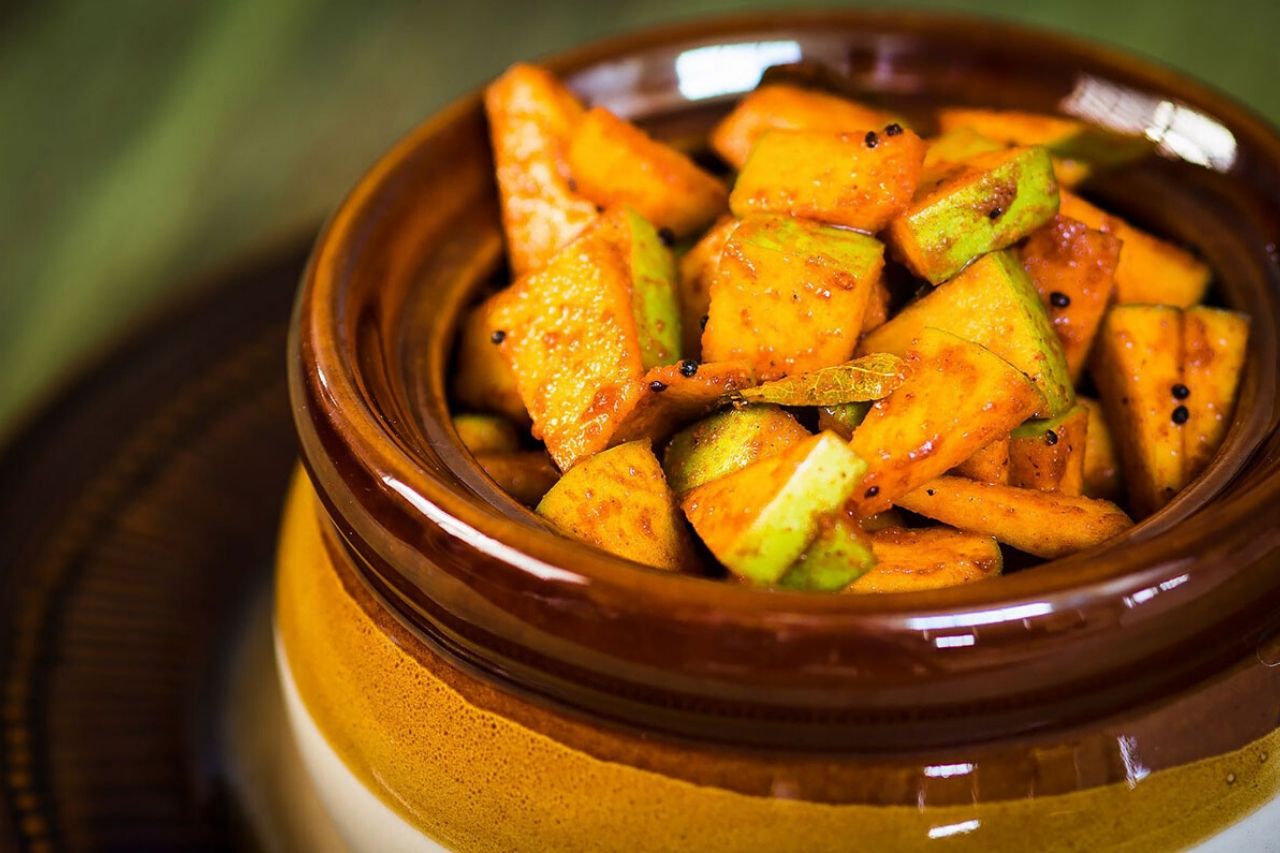
Source: Framed Recipes
Pickles are an integral part of Indian cuisine. Made from various fruits and vegetables, pickles can be sweet, sour, tangy and spicy and all at the same time. Making them need immense culinary knowledge and the art of mixing in right proportions and quantity. Pickles are made from common ingredients like chillies, mangoes, garlic, carrots, lemon and others. However, pickles are also made from some unique ingredients like bamboo shoot, ferns, fermented soya beans, lotus stem, banana flower among others.
List of Indian Souvenirs | Indian Handicrafts
-
Terracotta horses

Terracotta horses are one of the most iconic products of West Bengal and a popular Indian souvenir. These horses are made only at a particular village named Panchmura in Bishnupur, the terracotta town of Bengal. These horses are also known as Bankura horses after the place where they are made. If you visit Panchmura, then you can also see the artisans at work as well. Terracotta horses of Bankura are now considered a symbol of excellence of the rural handicrafts of India. They are also used as the official motif of the All India Handicraft Board.
Bankura horses have a peculiar feature with a long neck and erected ears. They are made of burnt clay and are usually mud-brown or black in color. These horses are available in various sizes starting from finger sized to that of human height. Apart from horses, terracotta figurines of elephant and idols of gods and goddesses are also made. Terracotta jewelleries are also quite famous across India.
Where to buy: Panchmura (Bankura), Biswa Bangla stores
-
Pattachitra

Pattachitra is one of the oldest art-work from Odisha and is an excellent example of the intricate and detailed handicrafts of India. Pattachitra essentially means painting on a piece of cloth usually depicting the Hindu mythological tales. The art of pattachitra is believed to have been evolved as early as the 12th century and is one of the most popular living art forms of Odisha.
The painting of pattachitra is mainly concentrated in Raghurajpur, a small village near Puri in Odisha. Almost all the families of the village are engaged in the art of pattachitra painting. The incredible temples of Odisha and the religious texts are often the main subjects of these paintings. A majority of these paintings are also inspired by Lord Jagannath. The colors used in the paintings are completely natural and their style is a mix of both folk and classical forms.
If you like to collect traditional paintings, then pattachittra is one of the most exquisite items that you can have in your collection.
Where to buy: Raghurajpur village, 10 km from Puri in Odisha
-
Dokra figurines

Dokra handicrafts are one of the most exquisite handicrafts made in India. The dokra figurines have always fascinated me and these metal items are undoubtedly a rare collector’s item. Dokra craft is believed to be almost 4000 years old craft involving the non-ferrous casting using the lost-wax casting also known as ‘Cire Perdue’. Infact, it is the earliest method of non-ferrous casting known to human civilization.
We had visited Dariaypur in West Bengal and Kuliana in Odisha and observed how these handicrafts are made. The process of making dokra is elaborate and involves a lot of precision and concentration on the part of the artisans. We could only appreciate their effort and time. Dokra is predominantly practiced in West Bengal, Odisha, Jharkhand, Madhya Pradesh and parts of Andhra Pradesh.
The sad part is that majority of these artisans do not get their due for hard work. These items are bought from them at very low prices and sold at high prices in the market. So if possible, buy directly from them and do not bargain with the artisans. They usually do not ask an exorbitant amount.
Where to buy: In West Bengal, you can buy Dokra figurines from Dariyapur near Bardhhaman and Bikna in Bankura. In Odisha, you can buy them from Kuliana villages. You will also get Dokrta handicrafts at Biswa Bangla stores.
-
Puppets

Puppets in India are a major form of folk entertainment. Since time immemorial, puppets have been used in India as a form of traditional and cultural performances. They have been used as a type of narrative theatre where the puppets form the characters of the play. There are mainly 4 types of puppets used in India – glove puppets, rod puppets, string puppets and shadow puppets. These puppets have been a part of the tradition and culture of India.
YOU MAY ALSO LIKE : WHY JAIPUR IS A GREAT HONEYMOON DESTINATION
Today, puppets are sold for decoration purposes and can be a colorful Indian souvenir to carry back home. You can hang them on walls in your home. The most colorful puppets according to me are the Rajasthani puppets. They come in various forms and colors. You will find them in most of the cities and towns of Rajasthan.
There are many other forms of puppets found in various parts of India, each having its own unique character. It would probably take me an entire post to talk about them.
-
Masks

Just like the puppets, masks have been used in India as a part of traditional dance and drama. Masks were used as ritualistic purposes and in dances for a long time. In India, there are different types of masks across various parts of the country and each of the masks has a distinct identity of their own. These masks are different in their style and their process of making. For example, the masks of Majuli and the Chhau masks are made from paper maiche and are lighter. The Kushamandi masks are made from wood and are much heavier. These masks are used for traditional dance and drama performances.

However, masks are now made as souvenirs, gift and décor items as well. While there are more than 100 types of masks found in India, the most popular ones are Chhau masks from Purulia, Kathakali mask from Kerala, masks from Majuli and the traditional Sikkimese and Tibetan masks.
-
Kashmiri carpets

Kashmiri carpets can be one of the prized souvenirs that you can take from India. These carpets are always handmade and are knotted and not tufted. The carpets are usually made of pure cotton or pure silk. It takes about 8-10 months to weave a high quality Kashmiri carpet. No wonder Kashmiri carpets are one of the most prized collectibles.
In India carpet weaving was first introduced in Kashmir in the late 15th Century. Even though spinning and weaving existed in Kashmir from earlier times, carpet weavers from Persia were brought to Kashmir to train the locals in this new technique. These days, Kashmiri carpets are made in various sizes and colors. A Kashmiri carpet can be considered a lifetime investment. A handmade carpet can cost from Rs 1000.00 to Rs 100000.00 depending on the size, material and the workmanship of the artisan.
Where to buy: For authentic Kashmiri carpets, visit any Kashmir Emporium stalls. You will find many other carpets in local markets. They are obviously fake ones.
-
Kondapalli toys

Kondapalli toys are made in a small village known as Kondapalli in Andhra Pradesh. Usually, these toys are made from the soft wood of ‘Tella Poniki’ tree and are brightly colored. Usually, natural colors are used for making these toys, but these days the artisans use acrylic colors as well. These toys usually depict Indian deities, mythological characters as well as scenes from day to day rural life. These toys are unique to India and can be an exclusive Indian souvenir to collect.
Where to buy: You can buy them from Kondapalli in Andhra Pradesh. You will also find them in the cities and towns of Andhra Pradesh and Telangana.
-
Traditional Hand Paintings

The diversity of Indian art and craft can be seen in the various vivid and distinct painting forms found in India. Various painting styles are prevalent across various parts of India, each of them representing their unique cultural heritage, traditions and customs and ideologies. Originally, Indian paintings generally existed as wall paintings and murals that you can see on visiting the various heritage sites of India. Later, these paintings have found their way on canvas, paper and cloth. These paintings are a reflection of the various indigenous lifestyles across India as well as an expression of the artist’s vision.

A few famous traditional painting forms in India are:
Madhubani paintings: Folk painting originated in Mithila, Bihar
Warli Paintings: 2500-year-old tradition paintings originated in the Thane and Nasik areas of Maharashtra inked with nature and social rituals of the tribe.
Kalighat Painting or Bengal Pat: Originated in 19th century in Kalighat area of Calcutta.
Phad: Narrative scroll painting from Rajasthan dating back to thousands of years.
Kalamkari Painting: 3000 year old organic art of hand and block painting originated in Andhra Pradesh. Kalamkari motif has now been introduced in textiles.
Miniature Painting: A distinct style combining Islamic, Persian and Indian elements, miniature paintings are considered to be a milestone in Indian art. There are distinct schools of miniature paintings such as Kangra, Rajasthan, Malwa, Pahadi, Mughal, Deccan etc.
Thangka: Thangka paintings are mainly used as an aid in meditational practices among Tibetan school of Buddhism. You can find these colorful paintings in Buddhist monasteries. Thangkas that are made for sale to tourists and collectors can be found in the curio shops.
You can buy these traditional Indian paintings from the place of their origin or from any curio shop.
-
Traditional showpiece
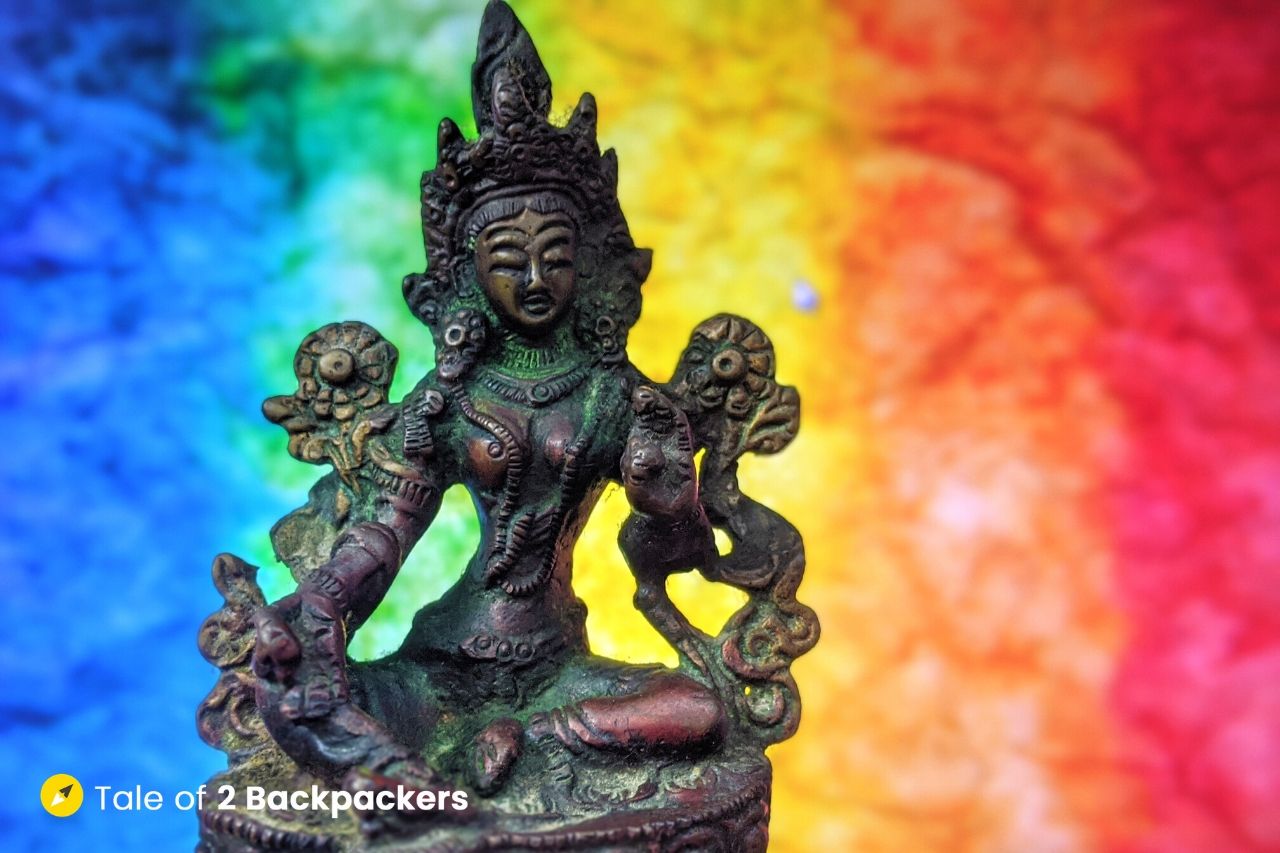
Traditional showpieces are one of the most treasured Indian souvenirs. You can buy them for decorating your home as well as for gifting others. These showpieces can never go wrong as gifts and mementos. These showpieces can be found as idols, statues and other designs that can serve as décor and enhance the beauty of your house.
You can buy traditional showpieces from various emporiums and curio stalls. Local handicraft markets are also the best places to get these showpieces.
-
Blue Pottery of Rajasthan

Rajasthan is actually the hub of Indian traditional handicrafts. The elegant blue pottery of Rajasthan is a well-known craft of the state. The name ‘blue pottery’ comes from the vibrant blue-colored dye that is used to color the pottery.
The blue pottery is unique in appearance and is made of a special dough prepared by mixing quartz stone powder, powdered glass, Multani Mitti (Fuller’s Earth), borax, gum and water. The blue color derived from cobalt oxide, green color from copper oxide and other unconventional colors are used to adorn these potteries. The patterns are said to have been originated from Persia, but now contemporary patterns including floral, geometric designs, animals and birds and Indian deities are used. Various decorative items like tiles, doorknobs, pots, mugs, vases and plates are made.
You will get these blue pottery items in many local shops in Jaipur.
-
Bamboo and cane items

Cane and bamboo form an integral part of the lives of many Indians, especially in Northeast India. Bamboo is used by the people to create many useful articles that are used in their day to day lives. Various handicraft items are also made using bamboo and cane, like photo frames, baskets, mugs, containers and various decorative items. Bamboo and cane are also used for making household furniture like tables, chairs, stools and even sofa set.
Bamboo is one of the fastest growing plants and their products are quite eco-friendly. I have seen many Indian tourists buying bamboo furniture on their visit to Siliguri. While you might not want to buy big furniture, you can definitely get a smaller showpiece as a souvenir from the place.
-
Jaipur Quilts

As the name suggests, Jaipur Quilts or Jaipur Razai is a light-weight quilt made in Rajasthan. These quilts are warm and snug and yet do not weigh much. These quilts were once made keeping in mind that the Rajasthani folks moved around a lot. So a lightweight and durable quilt was needed for keeping them warm.
These quilts are now favorite among the Indians and these can be carried as a useful souvenir from India. The cotton Jaipur quilts are now available in various colors and designs, both traditional and modern. Mostly they are woven on handlooms, but power looms are also used in many places. Starting from Rs 1000.00, you can get Jaipur quilts of both single, double, king and queen bed sizes.
-
Kauna Work, Manipur

Kauna is actually the local name for a water reed grass belonging to the Cyperaceae family grown abundantly in Manipur. It has a cylindrical, soft and spongy stem which, are then woven into mats, square and rectangular cushions and mattresses by the women of the Meitei community of Manipur. These Kauna grass crafts are thus a testimony to the creativity and wisdom of the Manipuri people. Baskets, laundry bags, handbags and other items are made using this grass. The products made are completely natural without the use of any chemicals.
However, the market is quite unorganized and there is some exploitation from the middlemen. If you are visiting Manipur, then please do buy a Kauna grass item directly from the artisans.
-
Sholapith
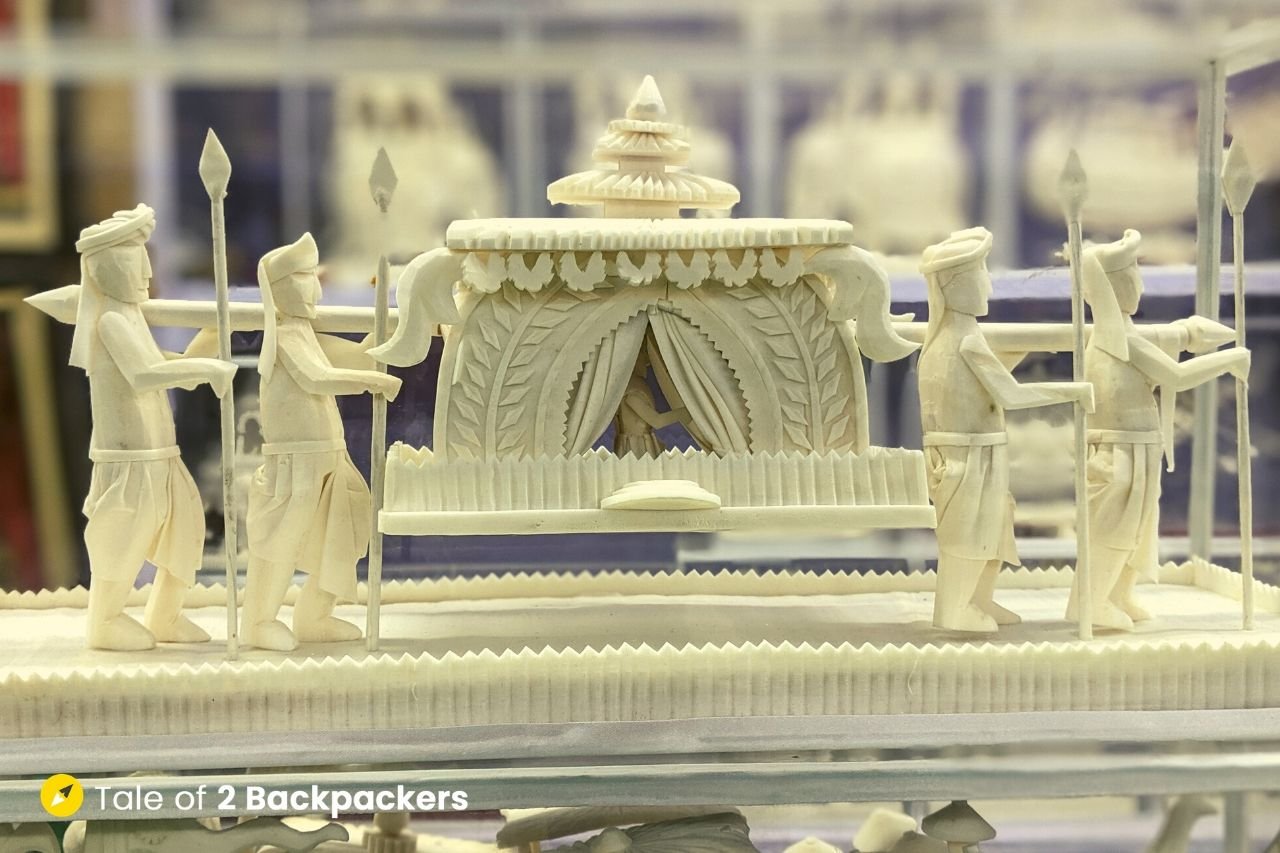
Sholapith is a traditional craft of Bengal that has now transcended the regional boundary and entered the international market. Shola is the white soft core obtained from the stem of Indian cork plant and has been used in Bengal since time immemorial. From the core, a dried milky white substance is obtained that is used to make the beautiful handicrafts. The white color of the Shola is indicative of purity and is thus often used for religious purposes.
During Durga Puja, even today many Durga idols are decorated with Shola. Objects made of shola are still used in the marriage rituals of Bengalis (mukut and topor). Shola is also eco-friendly as it is biodegradable and does not cause pollution.
Today Sholapith is used for making decorative items like ornamental boxes, wall hangings, wall panels, images of different gods and goddesses and many others. You can buy these Sholapith items at any Bengal emporium shops and Biswa Bangla stores.
-
Wood Carvings

Wood carvings are one of the most versatile and universal handicraft techniques in the world. India has a rich history in wood carvings and that can be seen in many ancient wood carved temples in the Kinnar region. Wood has been used as artistic and architectural work in temples and palaces and then gradually evolved into handicraft items with time.
Woodwork can be seen in many parts of India. Saharanpur in Uttar Pradesh is known for its intricate wood carvings. Kashmir is known for fine wood carvings from walnut trees. Several handicraft products like toys, jewellery boxes, bowls and plates are made with wood having intricate and detailed designs. Karnataka is famous for its sandalwood carvings. Starting from decorative items to furniture, sandalwood in Karnataka is used to make items like decorative boxes, models of animals and birds, candle stands, dance postures and many other products. You can also find woodwork and carvings in Darjeeling, Sikkim and many other Buddhist regions in India. These wood carvings and items can be great souvenirs to take back home from India.
You can find wood work in the local markets as well as emporiums. As I mentioned earlier, Sandalwood carvings and items are quite famous.
List of Indian Souvenirs | Others
-
Jewellery

Indian women love jewellery and that can be seen in the variety of jewellery found in the country. Well, Indian jewellery has its own identity and is known for its elaborate yet graceful designs. Starting from bangles, necklaces, earrings, nose pins, bracelets – these jewelleries have been adorning women for ages.
Traditionally, Indian jewellery is made from gold and silver. But these days, other metals are also used for making jewellery. Locally available products like wood, bamboo and terracotta are also used to make jewelleries. If you are not fond of heavy jewellery, then light weight jewellery with simple designs are also available in the markets these days. I am usually fond of light weight jewellery. Necklaces and nose pins are a big no for me, but I occasionally love to put on bangles and earrings.
For gold and silver jewellery, I would recommend you visit some well-known and established shops. For inexpensive jewellery and trinkets, local markets are enough to find the baubles of your choice. But yes, do bargain a lot when you are buying from the local market.
-
Shoes and handbags

Apart from the known brands of shoes and handbags, you can also find a number of local and traditional footwear and handbags in India. Contemporary shoes and handbags are available in the cities and town as usual, but ethnic footwear is also found in abundance.
Kolhapuri sandals and footwear are quite famous in India. They are colorful and good looking and go well with ethnic wear. In Delhi, you can buy them at Dilli Haat, Connaught Place, Janpath market and the state emporiums.
Likewise, you also get many locally made handbags that look chic and go with your ethnic wear. Shantiniketan handbags are quite famous worldwide. They are available in a wide range of colors, patterns and sizes with traditional motifs and depicts the rich cultural heritage of India gracefully.
-
Brass, copper and steel wares

Metal crafts are quite common in India and are available throughout the country. However, the style and type differ from region to region. Metal items can serve as a great Indian souvenir item. Not only they represent the country but they can also be highly useful. You will get pots, pans, vessels, plates, serving utensils and decorative wall hangings made from these metals.
Copper utensils have been proven to have health benefits. You will get various copper items in India starting from utensils to jewellery. Brass is a cheaper metal and you get several gift items made of brass. Being lightweight, they are easier to carry as well. Steel is usually used to make utensils, plates and glasses.
You can visit the local market in any place to buy these metal wares. However, be prepared to haggle a lot if you are buying from a local market. Ask for bulk discounts if you are buying more than one thing.
-
Incense Stick

Incense sticks are used by Indians while praying. Incense sticks emanate a fresh fragrance while burning and acts as a room freshener. A variety of fragrance is available in these incense sticks. Sandalwood is also one of the popular fragrances. You will get incense sticks everywhere in India in most of the local grocery shops. If you are Indian, incense sticks is not something that you might want to take back as a souvenir. But if you are visiting Pondicherry, do take a few packets of the incense sticks from the Aurobindo Ashram stall.
-
Singing Bowls

You will see these singing bowls, also known as Tibetan singing bowls in mostly Buddhist sites. These are actually a type of bell that vibrates and produces a deep tone when played. Buddhist monks have used these singing bowls during meditation practices. It comes with a metal bowl and a mallet.
The Tibetan Bowls are used for stress relief, pain reduction and meditation purposes. These bowls come in various sizes and on striking along the rim produce a relaxing and soothing sound.
Where to buy: You will find these singing bowls in the local markets and shops in Ladakh, Dharamshala, Darjeeling, McLeodganj.
-
Tibetan Prayer Flags

You can see these colorful flags fluttering in the wind invariably in all the places that have the influence of Tibetan Buddhism. Tibetan Prayer Flags are not just decorative items; they have a deeper meaning for the Buddhists and are steeped in Buddhist traditions. Each color holds a special significance and so are the words etched on the flags. There are a number of types of Tibetan flags and the Buddhists hold them at reverence.
Prayer flags are a popular souvenir choice for travelers visiting some parts of India, Nepal and Bhutan. The smaller sized ones are sold as souvenirs and gift items. If you are buying them for decoration purpose or to put them on your bike, you can buy them at any souvenir store. These flags in the souvenir shops are made for tourists and are considered as lesser flags by the local Buddhists. Even then, please do not disrespect these flags.
-
Ayurvedic products

Ayurveda and India go hand in hand. It is an ancient medicine system developed in the Indian subcontinent almost 5000 years back. This ancient therapy focuses mainly on healthy living rather than treating of ailments. Nevertheless, Ayurveda has helped many people to get rid of their ailments and lead a healthy life.
There are a number ayurvedic spa centres all over India where you can get the benefit of the ancient methods of Ayurveda. You can also buy a few ayurvedic products and medicines. These products are usually used for an overall wee-being of your health. Many of these ayurvedic products are also used as beauty products. These Ayurvedic products can thus serve as an ideal gift for family and friends. You can also purchase essential oils as a souvenir.

Things to remember when shopping Indian souvenirs
- We always recommend buying the products from their place of origin. You will get a wider range of collections and a better price.
- If you are visiting the village or artist where these things are made, then please buy directly from them. And we have a humble request to all not to bargain much for the products. The villagers and artisans usually keep a very small margin. The artists want their products to be seen and recognized and so they sell it even at low profit. This is mainly for the rare and dying handicrafts of India. However, this might not be the case in the touristy region.
- If you are buying an expensive product, we recommend you buy from an established and well-known shop. Do get the invoice for your purchase.
- If you are not sure about the authenticity of the product, then buy from a state emporium shop or renowned curio shop and get an invoice for your purchase.
- Shops in local markets do not mean they are all selling fake products. You can get some of the best products in local markets. However, be prepared to bargain a lot. Also, if you want to buy a replica of an expensive item, then local markets is the best place. As usual, remember to bargain.
- Finally, do not feel shy to ask the local people. Ask your host, people on road and others. Usually, you will get proper advice.
- Many times, auto and car drivers will take you to a certain shop as they get a commission from them. If you do not like their product, then there is no compulsion to buy from them. Do not get intimidated by these people. Look and check other shops in the locality before buying a product.
This is only an indicative list of Indian Souvenirs. There are obviously many other things that you can buy from various parts of India. We have only made a list of the most famous ones and the ones that we have seen and are proud owners of. We hope to add to this list over time.
Did you like the post? Please let us know in comments below. How many of these Indian souvenirs you have? Have we missed anything? I am sure we have. Please let us know so that we can include them in the list.
Pin this for a later read!








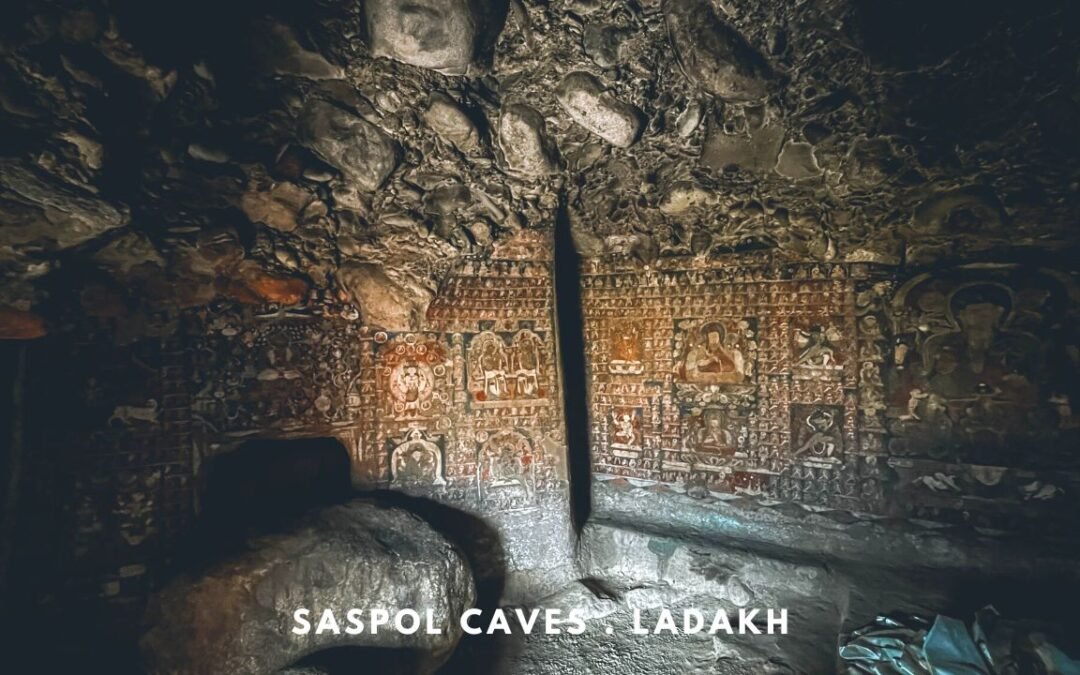


Wow!! Very beautiful blog. Some of the interesting souvenirs were Jewellery, Singing bowls, Ayurvedic products etc. Great.
Negotiating with the local artisans is something that is not fair. I hope people take their purchase of handicrafts/ dying artforms as an opportunity to boast about the skills of the artisans of our country.
Thats true! If you are buying directly from the artisans, it is good not to bargain. They do not ask for exhorbitant amount. The price rises only when middle men comes to t he picture. Thanks for the comment.